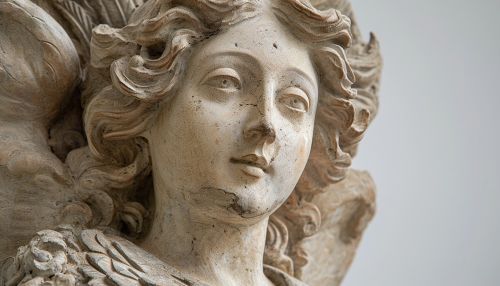Androgyny
Definition and Origins
Androgyny is a term derived from the Greek words "andro" (man) and "gyne" (woman). It refers to the combination of masculine and feminine characteristics, which can be expressed in terms of gender identity, sexual identity, or gender expression. Androgyny can manifest in many ways, including physical appearance, behavior, clothing, and personal identity. It is a complex concept that intersects with other concepts such as gender identity, sexual orientation, and gender expression.
Historical Perspectives
Throughout history, androgyny has been perceived and interpreted in various ways across different cultures and societies. In ancient civilizations, androgynous figures were often associated with spirituality and divinity. For instance, in Hindu mythology, the deity Ardhanarishvara represents the synthesis of masculine and feminine energies. In Greek mythology, the figure of Hermaphroditus, the child of Hermes and Aphrodite, embodies physical androgyny.


In the Middle Ages, androgyny was often associated with monastic life, where monks and nuns were encouraged to transcend their biological sex in their pursuit of spiritual enlightenment. During the Renaissance, androgyny was often depicted in art and literature as a symbol of the ideal human form, embodying both masculine strength and feminine beauty.
Modern Interpretations
In the 20th and 21st centuries, androgyny has been increasingly recognized and explored in various fields such as psychology, sociology, and the arts. In psychology, the concept of androgyny was popularized by psychologist Sandra Bem through her Bem Sex-Role Inventory (BSRI), which measures masculinity, femininity, and androgyny as separate dimensions of personality.
In the realm of fashion and popular culture, androgyny has been embraced by various artists and celebrities, challenging traditional gender norms and promoting gender fluidity. This has led to a broader acceptance and understanding of androgyny as a form of self-expression and identity.
Androgyny and Gender Identity
Androgyny is closely related to, but distinct from, non-binary and genderqueer identities. While androgyny often involves a blending or balancing of masculine and feminine traits, non-binary and genderqueer identities may reject these binary traits altogether. Some individuals may identify as androgynous as a way to express their gender identity outside of the traditional male/female dichotomy.
Androgyny in Fashion
Androgyny has had a significant impact on fashion, with many designers and brands incorporating androgynous elements into their collections. This has led to the emergence of unisex clothing and the blurring of traditionally gendered fashion norms. Androgynous fashion often involves a mix of masculine and feminine clothing items, challenging the societal expectations of how men and women 'should' dress.
